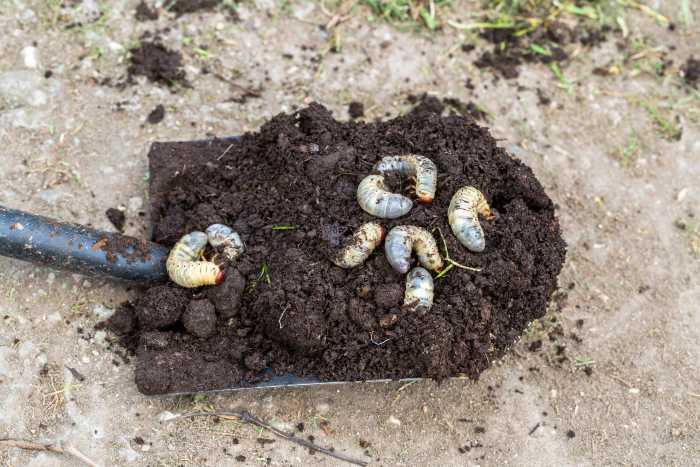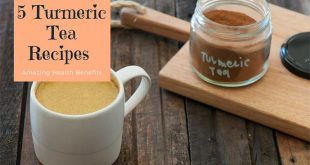A Comprehensive Guide to Removing Grubs From Your Garden
Grubs are the plump, white larvae of beetles that can wreak havoc on your garden. These voracious pests feast on grassroots, depriving your plants of essential nutrients and causing extensive damage. Recognizing the signs of a grub infestation, understanding the types of grubs in your garden, and learning how to remove them is crucial for maintaining a healthy and thriving garden.
In this article, we will explore the telltale signs of grubs in your garden, explain why they should be eradicated, discuss the types of grubs commonly found, and provide you with natural methods to eliminate them. If all else fails, we’ll also discuss the judicious use of pesticides as a last resort.
Signs of Grub Infestation:
Identifying a grub infestation early on is vital to prevent extensive damage to your garden. Here are some signs to look out for:
- Wilted or Discolored Plants: Grubs feast on grassroots, which can lead to weakened plants exhibiting signs of wilting, yellowing, or browning.
- Patches of Dead Grass: If you notice irregular patches of dead or dying grass in your lawn, it could be a result of grubs feeding on the roots.
- Increased Animal Activity: Animals such as skunks, raccoons, and birds are attracted to grubs and may start digging up your garden or lawn in search of a meal.
Types of Grubs in Your Garden:
There are two main types of grubs commonly found in gardens:
- Japanese Beetle Grubs: Japanese beetles are notorious for their grub larvae. These grubs have a C-shaped body, are about an inch long, and have a white or cream color with a brown head. They can cause significant damage to lawns and plants.
- June Beetle Grubs: June beetles, also known as May beetles or June bugs, have grubs that are similar in appearance to Japanese beetle grubs. They have a C-shaped body, are about an inch long, and have a creamy white color with a brown head. June beetle grubs feed on grassroots and can cause damage to lawns and garden plants.
Natural Ways to Eliminate Grubs:
- Handpicking: Begin by manually removing grubs from the affected area. Wear gloves and gently search through the soil, picking out grubs and placing them in a bucket of soapy water to drown them.
- Beneficial Nematodes: These microscopic worms are natural predators of grubs. Purchase nematodes from a garden supply store and follow the instructions for application. They will infect and kill the grubs without harming your plants.
- Milky Spore Disease: This bacterial disease affects the larvae of Japanese beetles, which are notorious grub producers. Milky spore powder can be spread in affected areas, disrupting the life cycle of grubs and preventing their reproduction.
- Neem Oil: Neem oil acts as an effective natural insecticide. Dilute it according to the instructions on the label and spray it onto the affected plants and surrounding soil. This will deter grubs and disrupt their feeding habits.
- Soil Solarization: If your garden has been severely infested, consider solarizing the soil. Cover the affected area with a clear plastic tarp and leave it in place for several weeks during the hottest part of the year. The heat trapped under the tarp will kill grubs and other pests.
Pesticides as a Last Resort:
When all else fails, and the infestation is severe, you may consider using pesticides. However, it’s essential to remember that pesticides can have unintended consequences on beneficial insects and the environment. If you decide to use pesticides, follow these guidelines:
- Choose a Targeted Pesticide: Opt for a pesticide specifically designed to target grubs. Read the label carefully and follow the instructions for application.
- Apply at the Right Time: Apply the pesticide when the grubs are in their most vulnerable stage, usually during late summer or early fall. This ensures maximum effectiveness.
- Limit Usage: Use pesticides sparingly and only in the affected areas. Avoid spraying pesticides on the entire garden, as this can harm beneficial insects and upset the ecological balance.
Grubs can wreak havoc on your garden, causing significant damage to plants and lawns. Detecting the signs of a grub infestation early on, understanding the types of grubs present, and taking immediate action is crucial to prevent further harm. Utilize natural methods, such as handpicking, nematodes, milky spore disease, neem oil, and soil solarization, to eliminate grubs without resorting to pesticides. If all else fails, exercise caution and use targeted pesticides as a last resort. With proper care and vigilance, you can reclaim your garden from these destructive pests and enjoy a flourishing, healthy landscape.
 Home and Gardening Ideas At home and Gardening ideas we believe inspiring readers about homesteading, self sufficiency
Home and Gardening Ideas At home and Gardening ideas we believe inspiring readers about homesteading, self sufficiency






